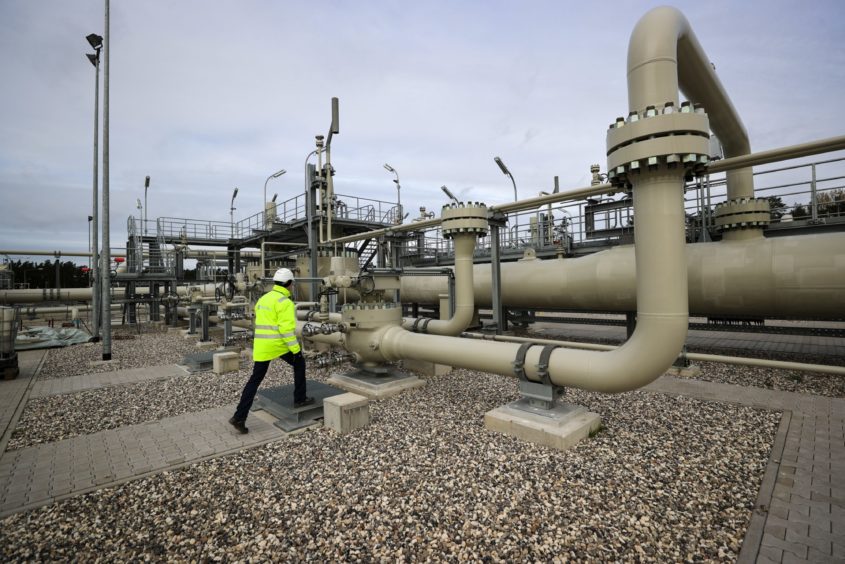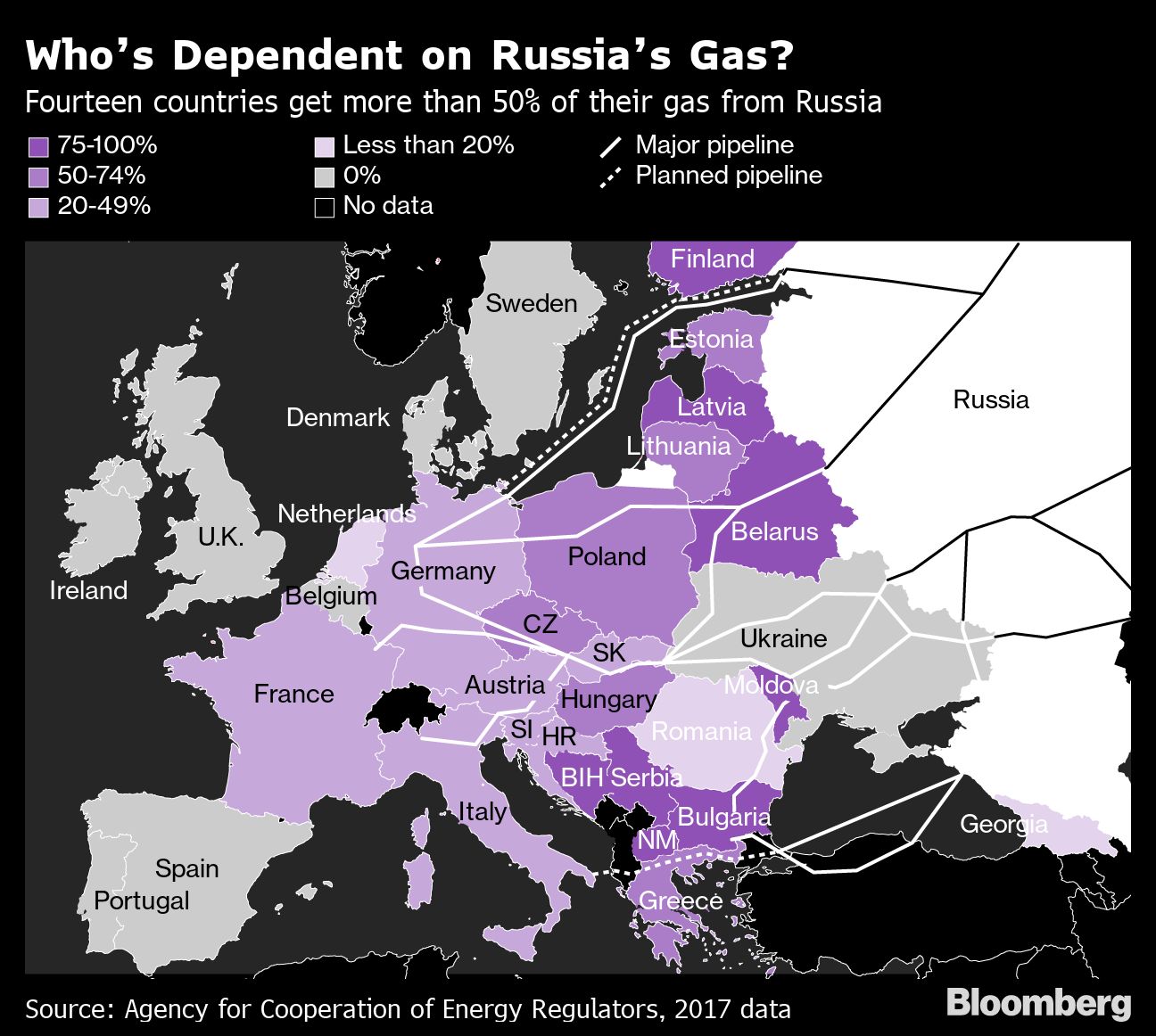
Russia is stepping up work on the Nord Stream 2 pipeline before the US tightens sanctions against the controversial project designed to feed more natural gas into Germany.
Construction of the 1,230-kilometer (764-mile) reached a milestone on Monday with the completion of pipe-laying in German’s exclusive economic zone, the project operator said. Among the next steps resuming work in Denmark’s part of the Baltic Sea, where the bulk of the remaining sections of the 157 kilometer link will be located.
“There are approximately 120 kilometres in Danish waters and approximately 30 kilometres in German EEZ to be laid,” Nord Stream 2 said in an emailed reply to questions on Tuesday. “We are not in a position to deliver further construction details. We will inform about further offshore construction activities in due time.”
Progress on the link is a victory for Russian President Vladimir Putin and the nation’s gas export champion, Gazprom PJSC. When complete, the project will allow Russia to expand deliveries of gas to Europe and circumvent the traditional transport corridor through Ukraine. The U.S. and Eastern European nations say Nord Stream 2 will make Germany and the European Union too reliant on Russian gas.

Work on the 9.5 billion-euro ($11.6 billion) project stopped a year ago by U.S. sanctions and resumed only earlier this month when Gazprom found its own ship to lay the pipeline. Nord Stream 2 can use the vessel Fortuna to carry out the work starting Jan. 15, assisted by construction vessels Murman and Baltiyskiy Issledovatel and other supply ships, the Danish Maritime Authority said last week.
Based on the Danish permit, the operator must submit an updated schedule to the nation’s Energy Agency prior to carrying out the works. So far, the regulator hasn’t received the updated plan, the agency said. The Fortuna vessel can lay as much as 1 kilometer of pipes per day.
At that rate, analysts estimate Nord Stream 2 could start operations as soon as the end of 2021 under an optimistic scenario.
The. US meanwhile is maneuvering to tighten sanctions, extending penalties to companies that provide technical certification and insurance for the work. That legislation was part of a broader defense bill that passed congress but was vetoed by President Donald Trump. The House of Representatives voted to override the veto. If that’s endorsed by the Senate, which is dominated by Trump’s Republican Party, the new measures could come into force in the next few weeks.
Should the Senate override Trump’s veto on the defense bill, “the new sanctions against Nord Stream 2 will turn into reality,” said Mateusz Kubiak, a senior analyst at Warsaw-based energy consultant Esperis. “It might be just an another factor that will make it more difficult for the Russians to effectively and timely restart works” in the Danish waters in January, Kubiak said.
“All of the additional pipe-laying activities will now be sanctioned, including suverying, trenching and rock placement,” he said.
The U.S. maintains that Nord Stream 2 gives Russia too much leverage over Europe and that American liquefied natural gas supplies are a better alternative. Nord Stream 2 benefits the economies of Germany and Europe since the price of Russian pipeline gas is 20% lower than that of U.S. LNG, according to Putin.
U.S. sanctions can complicate the completion of Nord Stream 2, Kremlin spokesman Dmitry Peskov told reporters last week. Deputy Prime Minister Alexander Novak told the state TV channel Rossiya 24 on Monday that the pipeline will be complted because good for European business.
“It’s a commercial project, which is, in the first place, in the interests of our foreign partners,” Novak said.
